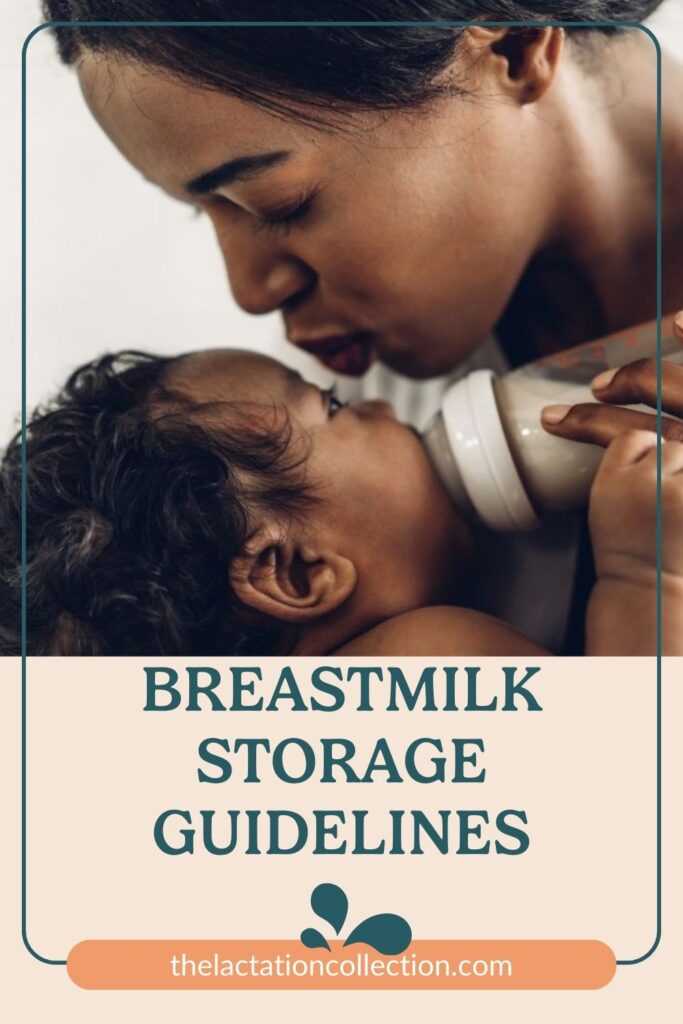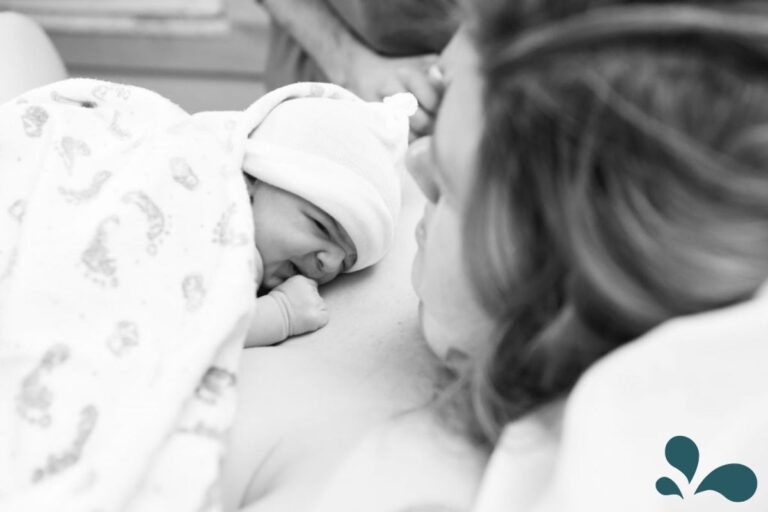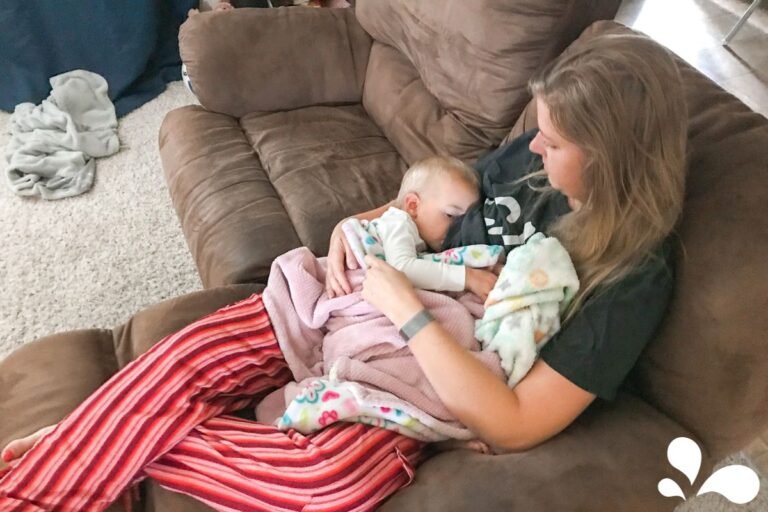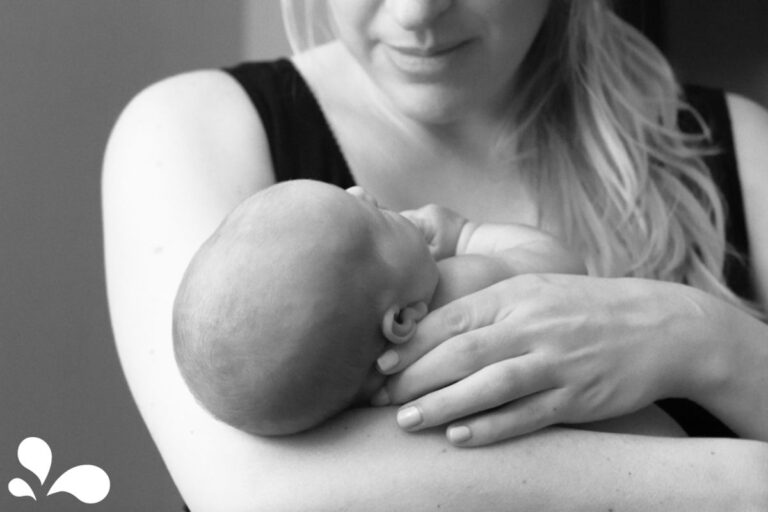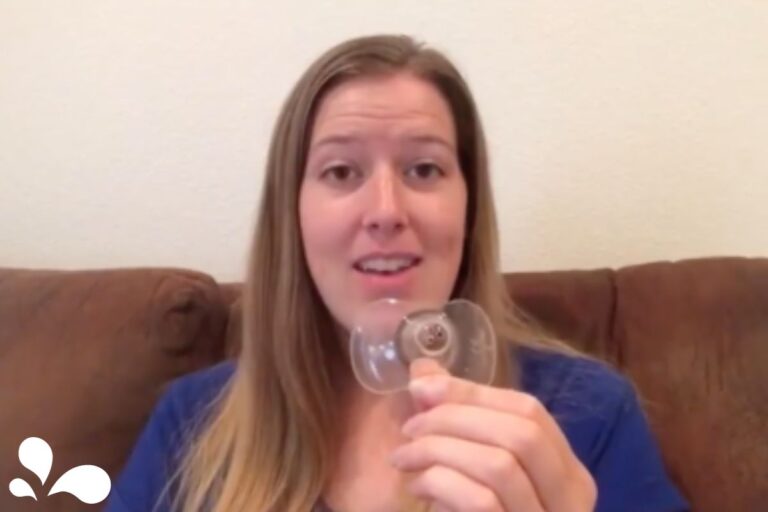There’s a lot of information about the best ways to store breastmilk, but we’ll give you the simple things you must know. We are here to help!
Storing breastmilk is all about using the correct containers, keeping things sanitized, monitoring temperature, and labeling. It really is that simple!
The Best Breastmilk Storage Containers
It would be best if you store your breastmilk in clean breastmilk bottles or breastmilk storage bags. Everything you use should be BPA-free.
Breast pumps often come with storage bottles. I suggest storing breastmilk in bottles in the fridge and bags in the freezer.
You can add expressed breastmilk to stored milk in the fridge – but you need to make sure to cool the breastmilk you want to add before combining them. Don’t add warm milk to cold milk!
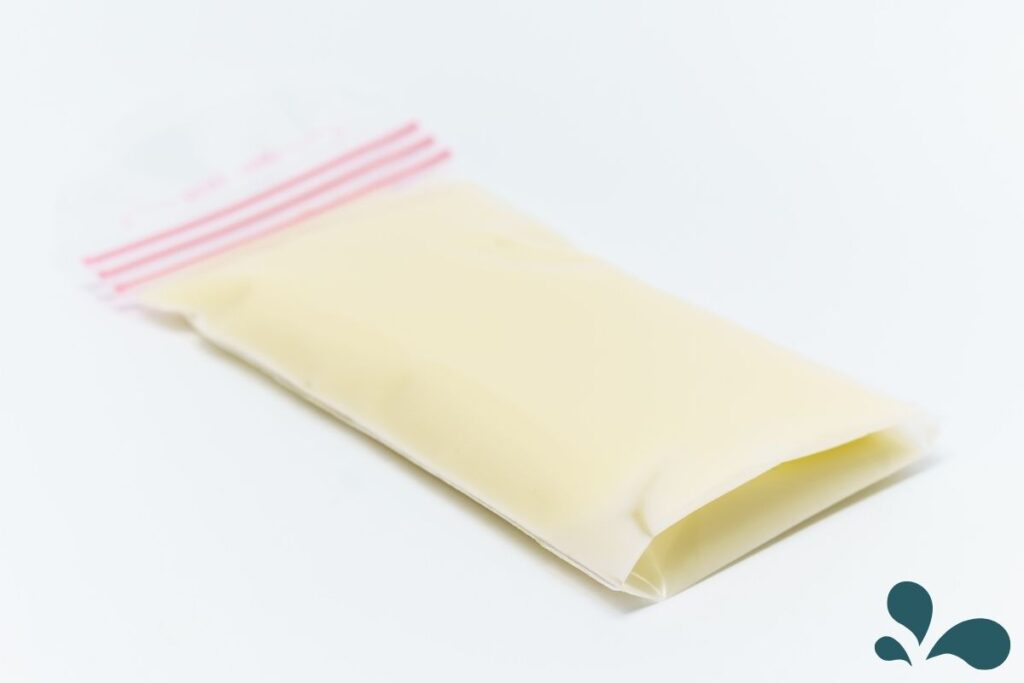
Safe Storage of Breastmilk
Before you start handling stored breastmilk, make sure you’ve washed your hands with warm water and soap. We want the milk your baby drinks to be free of germs.
After you’ve pumped breastmilk, make sure you thoroughly clean your pump and all of the tubes. Pro tip: If you pump frequently, store your pump parts in a ziplock bag in the fridge between uses and wash them at the end of the day. You can choose to feed your baby the pumped milk immediately or store it for later.
You can safely store breastmilk at room temperature, in the refrigerator, or in the freezer. I’ll go over the best ways to store breastmilk and even share a few of my tried-and-true breastmilk organization tips.
Store your breastmilk in small amounts – roughly 2-4 ozs depending on how much you expect your baby to eat each feeding. We store breastmilk in small amounts because storing half-eaten breastmilk leads to bacteria growth. Instead of wasting your breastmilk, store it in smaller amounts!
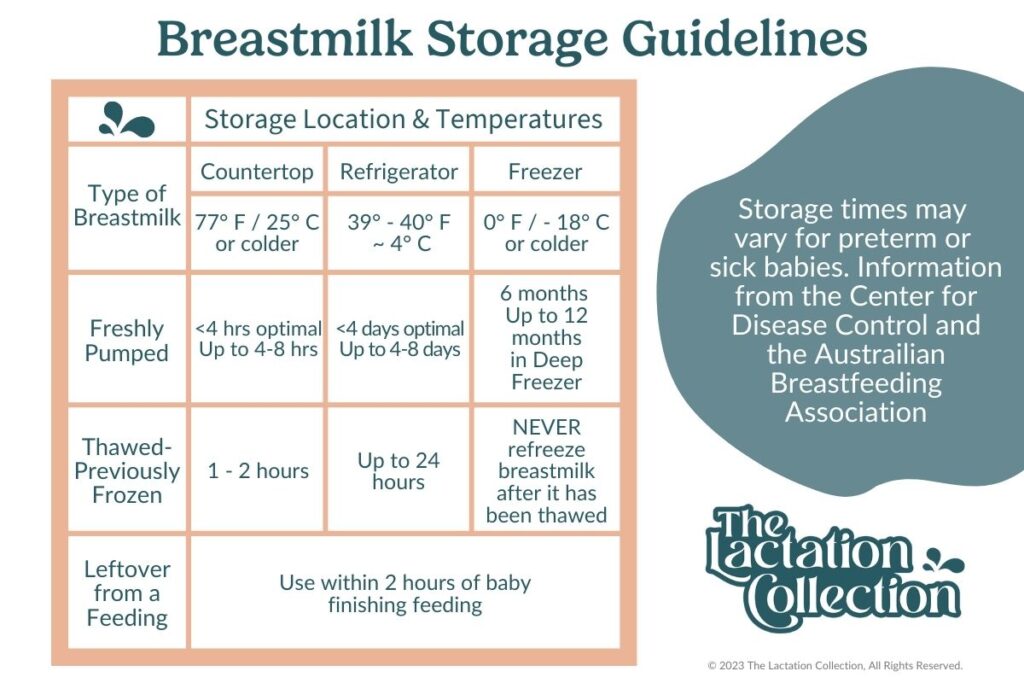
Storing Breastmilk at Room Temperature
You can store breastmilk at room temperature for 4-5 hours. Feel free to use this method if you’ve pumped or expressed breastmilk and plan on feeding your baby within 4-5 hours. When storing breastmilk at room temperature, make sure the temperature in your home is at 77 °F or colder.
It works well to store breastmilk at room temperature in bottles only. Storing breastmilk in bags at room temperature is a little tricky.
How to Store Breastmilk in the Fridge
You can safely store breastmilk in the fridge for 4-5 days. Only store uneaten breastmilk in the fridge, because half-eaten breastmilk will grow bacteria.
Save breastmilk storage bags for the freezer, so use your breastmilk storage bottles for the fridge! Place the bottle of expressed breastmilk in the coldest part of your fridge. Avoid storing breastmilk in the door of your fridge, because the temperature will change when the door is opened and closed.
Breastmilk does not have to be warmed up; you can serve your baby cold breastmilk! However, not all babies will accept cold milk, so make sure you use proper warming techniques.
How to Warm Cold Breastmilk
If there’s one thing you take from this blog post, let it be this: do not heat breastmilk in the microwave!
The microwave will create “hot spots” in the breastmilk, which could burn your baby’s mouth. Microwaving breastmilk also kills off key nutrients in the milk.
The best way to warm up breastmilk is to either run the bottle underneath a stream of warm (not hot) water or place it in a mug or bowl of warm water. This method warms the milk entirely instead of creating hot spots.
Make sure to test the breastmilk on your wrist before giving it to your baby. The milk should be warm, not hot to the touch.

Best Way to Store Breastmilk in the Freezer
Breastmilk can be stored in the freezer for up to 5 months. Use your breastmilk storage bags to store your breastmilk in the freezer.
Breastmilk expands when frozen, so remember only to fill up the breastmilk storage bags three-quarters of the way full. It would be best if you only store 2-4 ozs of breastmilk per bag to reduce waste.
Store your frozen breastmilk in the back of the freezer in the coldest part. Storing breastmilk storage bags in the freezer door will compromise the milk’s temperature when the door opens.
Breastmilk Freezer Organization
When storing breastmilk in the freezer, organization is helpful. Start by properly labeling your storage bags with the date the milk was pumped. Get as much air out of the bag as you can. Freeze the breastmilk flat in the freezer so that, once it’s frozen, it takes up less space. Once your breastmilk is frozen, you can find a container that will fit in your freezer and place the bags in the box vertically.
Because you want to use frozen breastmilk within 5 months of pumping and storing, place the oldest milk at the front of your container. Use a “first-in, first-out” system. If you’re stocking up on breastmilk, you’ll want to use the oldest milk first to stay within the five-month range. If you have plenty of milk on hand, give your baby the newest milk and donate the older milk.
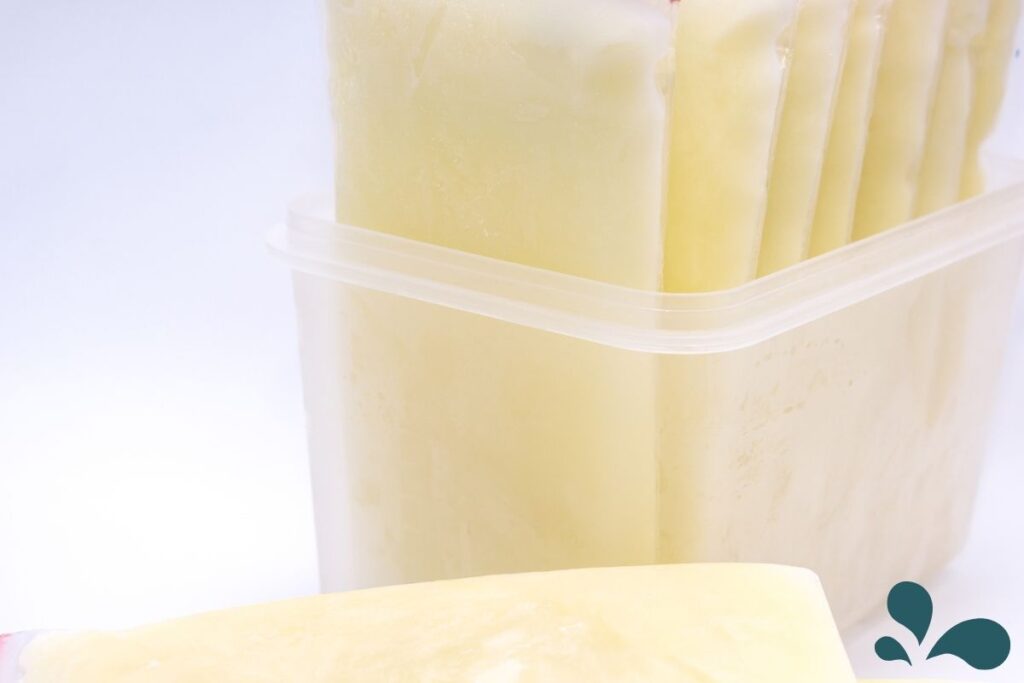
What is the Rule of 5?
We know what mom-brain feels like. You might not always remember when you pumped, what you pumped, or how you stored it. That’s why we love the Rule of 5’s!
If you’re ever in doubt, think of the Rule of 5’s. Breastmilk can be stored at room temperature for up to 5 hours, in the fridge for up to 5 days, or in the freezer for up to 5 months. The Rule of 5’s for breastmilk storage will help you stay sane and safely feed your baby pumped breastmilk.
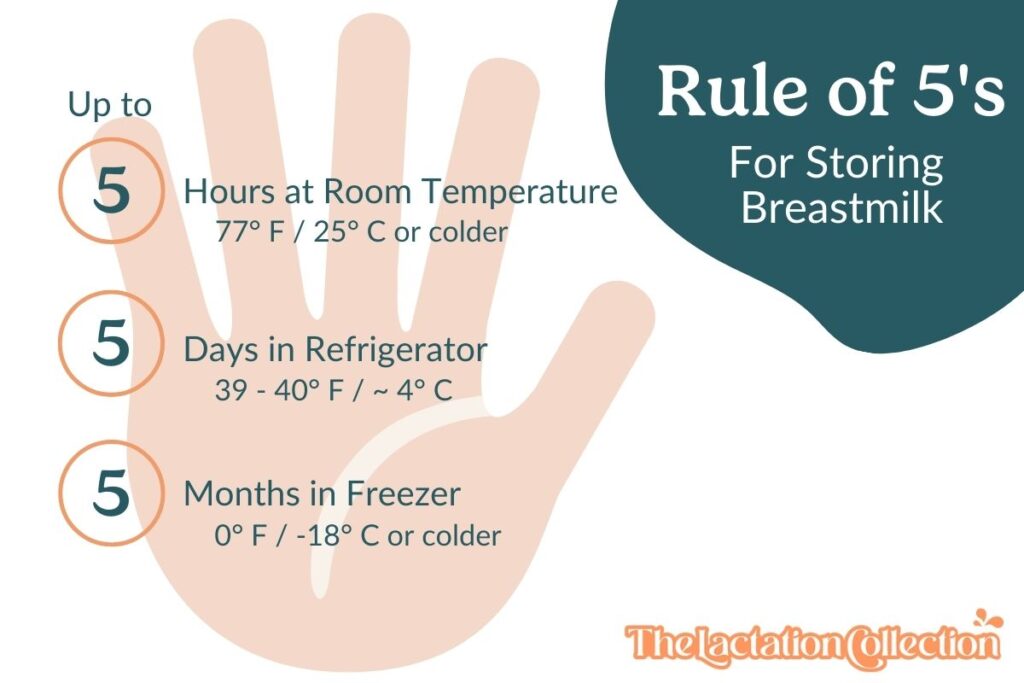
What if Pumping Breastmilk is Difficult?
If pumping breastmilk or breastfeeding is difficult for you, or you need a refresher, you should watch the “Pumping & Storing Basics” module from the Breastfeeding Basics online course, which covers pumping and so much more! You’ll get the ins-and-outs of pumping, storing, and feeding baby expressed breastmilk from an RN, an International Board Certified Lactation Consultant, and a mama of 3.
We’ve helped hundreds of women breastfeed with confidence, and we can help you too.
